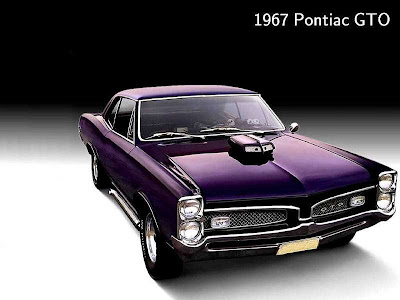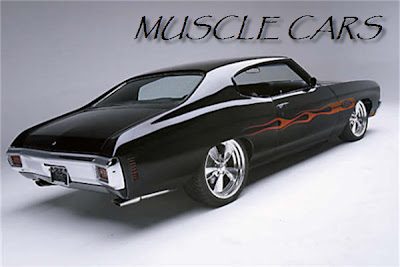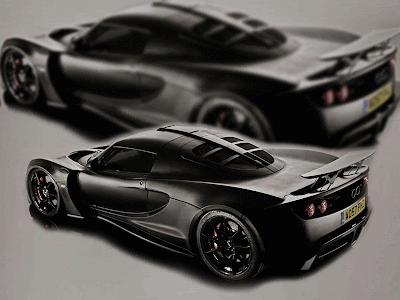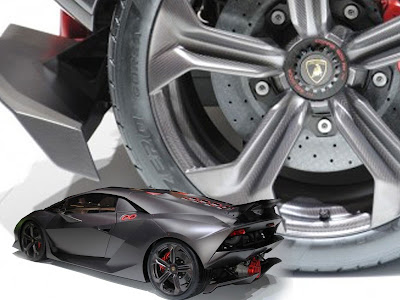 These muscle cars generally rear wheel drive vehicle using a powerful V8 engines to deliver high performance. Even car enthusiasts today, as many such vehicles.
These muscle cars generally rear wheel drive vehicle using a powerful V8 engines to deliver high performance. Even car enthusiasts today, as many such vehicles.Monday, December 27, 2010
Collection American Muscles Car
 These muscle cars generally rear wheel drive vehicle using a powerful V8 engines to deliver high performance. Even car enthusiasts today, as many such vehicles.
These muscle cars generally rear wheel drive vehicle using a powerful V8 engines to deliver high performance. Even car enthusiasts today, as many such vehicles.Best Strong Muscle Cars Wallpapers
 There are many people who are hardcore fans of muscle cars. So here are some wallpapers of this high-performance vehicles from the late 60s and early 70s. These cars are still used in the competitions of street racing.
There are many people who are hardcore fans of muscle cars. So here are some wallpapers of this high-performance vehicles from the late 60s and early 70s. These cars are still used in the competitions of street racing.New Stong Muscle Cars
Strong Of Used Muscle Cars
 Here are some photos of old cars used muscles. There are many people worldwide who are very interested in buying the same old cars in this category. Even in those days powerful V8 engine was used in this car.
Here are some photos of old cars used muscles. There are many people worldwide who are very interested in buying the same old cars in this category. Even in those days powerful V8 engine was used in this car.2010 Venom GT Hennessey Supercar Concept
Hennessey Performance Engineering today announced that it is introducing the company's first concept car - The Venom GT. Penned by British auto designer, Steve Everitt, the Venom GT would incorporate Hennessey's potent Venom 1000 Twin Turbo Viper V10 powerplant into a light weight mid-engine chassis weighing "under 2,700 lbs". Power would be run through a 6-speed transmission or optional sequential gearbox. With a power to weight ratio of just 2.7 lbs per bhp Hennessey estimates that the Venom GT could attain 0 to 100 km/h times in less than 2.5 sec. and a 0-300 km/h time of around 14 seconds.
Venom GT Hennessey Supercar
The Hennessey Venom GT weights less than 2,400 lbs (1,071 Kg) and to stop the Venom GT, Hennessey added Brembo brakes with 6-piston calipers up front and 4-piston calipers in rear clamping down on 15-inch carbon ceramic rotors. Hennessey plans on building 10 units of the Venom GT annually and four have already been sold at around $600,000 a pop. That means there are only six units left from the first allocation.
Venom GT Hennessey Supercar
SEALY, TEXAS & SILVERSTONE, ENGLAND, March 29, 2010 - Hennessey Performance is pleased to introduce the first official images of its Venom GT supercar. Based upon the Lotus Elise, the Venom GT combines a high-tech, lightweight British chassis with a powerful American V8.
Venom GT Hennessey Supercar
“This is not the first time that Britain and America have joined forces to produce a weapon of mass propulsion”, said company founder and president, John Hennessey. “Over fifty years ago the American-built P-51 Mustang fighter aircraft was flown into history powered by a British Rolls-Royce Merlin engine. Today the Hennessey Venom GT promises to set a new standard of power to weight ratio in the rarefied air of today's supercar market.”
Venom GT Hennessey Supercar
In the case of the Venom GT, less weight means more performance. The Venom GT will have a production curb weight of less than 2,400 lbs (1,071 kilos) aided by its lightweight carbon fiber bodywork and carbon fiber wheels. Stopping power is delivered via Brembo brakes with 6-piston calipers up front and 4-piston calipers in rear clamping down on 15-inch carbon ceramic rotors.
Venom GT Hennessey Supercar
The Venom GT’s base power plant is the supercharged 6.2 liter LS9 V8 (the same as in the Corvette ZR1) tweaked by Hennessey to 725 bhp. The company will also be offering 1000 bhp and 1200 bhp twin turbo V8 engine variants. The mid-engine V8 will transmit its power to the rear tires via a Ricardo 6-speed gearbox.
Venom GT Hennessey Supercar
Hennessey plans to manage power output by using a programmable traction control system. CFD (computational fluid dynamic) tested bodywork and down force will also help keep the Venom stable at speed. An active aero system with adjustable rear wing will deploy under varying conditions on both the road and racetrack. An adjustable suspension system will allow ride height adjustments according to speed and driving conditions. Finally, power will be put to the ground via massive Michelin PS2 tires.
Venom GT Hennessey Supercar
Hennessey will be building the power plants at its Texas facility. The engines will then be air freighted to the company's assembly facility near Silverstone, England where the Venom GT is built and tested. Venom GT buyer will be offered a 1-day driver orientation and instruction program by a Hennessey factory test driver, at a track in the UK or USA prior to delivery.
Venom GT Hennessey Supercar
Hennessey plans on building 10 units of the Venom GT annually and four have already been sold at around $600,000 a pop. That means there are only six units left from the first allocation. The company plans to establish a network of Venom GT dealers and distributors in the Middle East, Europe, Russia, Australia and Asia.
2010 Lamborghini Sport Cars Lamborghini Sesto Elemento Concept
The Lamborghini Sesto Elemento, was unveiled at the 2010 Paris Auto Show this month. Star of the Italian maker’s Paris Motor Show stand is the astonishing Sesto Elemento. The Sesto Elemento Concept is a brutal sports car weighing just 999 kg. It’s Lamborghini’s first example of its new supersports car manifesto - same power but less weight.
“The Lamborghini Sesto Elemento shows how the future of the super sports car can look – extreme lightweight engineering, combined with extreme performance results in extreme driving fun. We put all of our technological competence into one stunning form to create the Sesto Elemento,” said Stephan Winkelmann, President and CEO of Automobili Lamborghini. “It is our abilities in carbon-fiber technology that have facilitated such a forward-thinking concept, and we of course also benefit from the undisputed lightweight expertise of Audi AG. Systematic lightweight engineering is crucial for future super sports cars: for the most dynamic performance, as well as for low emissions. We will apply this technological advantage right across our model range. Every future Lamborghini will be touched by the spirit of the Sesto Elemento.”
2010 Lamborghini Sport Cars Lamborghini Sesto Elemento Concept
Additional 100 percent by AUDI AG, the Italian car manufacturer also benefits from the expertise that is not necessary from the German manufacturer when it comes to light construction. With an amazing output of 570 hp, a sensational power-to-weight ratio of just 1.75 kilograms per hp and 0 to 100 km / h (0-62 mph) acceleration of only 2.5 arcseconds, which ensures unsurpassed Elemento Sesto aim fun .The 2010 Lamborghini Sport Cars Lamborghini Sesto Elemento Concept has a power-weight ratio of 1.75 kg/hp. It reaches 100 km/hr in just 2.5 seconds and has a top speed of “well over 300 km/hr”. It’s exactly the kind of supercar innovation that Lamborghini should be investing in and while carbon fibre has become famous, the company has also experimented with other modern materials, such as Pyrosic for the exhaust system (a new glass and ceramic composite material).
The Lamborghini Advanced Composite Structures Laboratory (ACSL) at the University of Washington in Seattle, USA, uses experimental tests to define the mechanical behaviour of the different materials and technologies using methodology from the aviation industry.
The design is inspired by the limited-edition Reventòn supercar, but makes more of a feature of its deep front end, while the V10 is open to the elements. The Sesto Elemento isn’t road legal, but it is a running prototype, so testing Lamborghini’s claims is a possibility.
2010 Lamborghini Sport Cars Lamborghini Sesto Elemento Concept
2010 Jaguar Sport Cars Jaguar C-X75 EREV Electric Supercars Concept
At the 2010 Paris Auto Show, the Jaguar C-X75 Concept Car has finally been revealed after months of tantalizing tidbits from Jaguar designers and executives. The surprise is, this supercar is powered by an innovative powertrain that combines hub-mounted electric motors and twin micro gas turbines. The Jaguar C-X75 is described by company executives as a “range-extended electric two-seater supercar.”
The C-X75 concept cars is both a celebration of 75 years of iconic Jaguar design and a look into the future of automotive technology. “Performance through innovation has always been a Jaguar hallmark. From the beginning, cars such as the C-Type and D-Type pioneered aluminum construction, aerodynamic design, racing monocoques and disc brakes. The C-X75 demonstrates that the company is still leading the field in automotive design and technology.” Dr Ralf Speth, Chief Executive Officer, Jaguar Land Rover.
The 2010 Jaguar Sport Cars Jaguar C-X75 EREV Electric Supercars Concept is shorter, slimmer and lower than most supercars, and the Jaguar designers have made the concept car’s aerodynamics as efficient as possible to enhance performance, notably the exhaust-blown underbody aero diffuser. Matt Beavan, the car’s principal designer, also says, “We wanted to emphasize how the air makes its way not just over the car but is also channeled into the rear air box. When operating at 80,000 rpm, each gas turbine requires 25,000 liters of air per minute, which means we need a series of carefully honed intakes.”
2010 Jaguar Sport Cars Jaguar C-X75 EREV Electric Supercars Concept
The C-X75’s 580kW (778bhp) propulsion system combines powerful 145kW (195bhp) electric motors at each wheel for outstanding performance. At the center of the car sit state-of-the-art, mid-mounted micro gas-turbines. These can either generate 140kW (188bhp) to charge the batteries and extend the range of the car to a remarkable 900km (560 miles) – enough to drive from London to Berlin on a single tank – or when in Track mode provide supplementary power directly to the electric motors. The four electric motors provide torque-vectored, all-wheel drive traction and grip, essential in a car that produces 580kW (778bhp) and 1600Nm (1180lb ft) of torque.The plug-in, electric drive supercar has an all-electric range of 110 km (68 miles) plus a potential top speed of 330 km/h (205 mph), acceleration from 0-100 km/h (62 mph) in 3.4 seconds, and 80-145 km/h (50-90 mph) in 2.3 seconds. Active aerodynamics allow for a simple fuselage section that remains stable at very high speeds. The plug-in will produce 28 grams of CO2 per kilometer on the EU test cycle, according to Jaguar.
2010 Jaguar Sport Cars Jaguar C-X75 EREV Electric Supercars Concept
--##**# Jaguar Cars #**##--From its beginning as a manufacturer of motorcycle sidecars in 1922, Jaguar Cars has grown to become one of the world’s premier manufacturers of luxury sedans and sports cars and with that, one of the most recognized commercial brands. The company’s vision is simple: To produce beautiful fast cars that are desired the world over. The company operates two manufacturing plants in the United Kingdom and is fully engaged in environmental programs, community work and brand awareness exercises such as motorsports.
2010 E-Wolf Electric Sport Cars E-2
Now the creator of the European electric sports cars, the E-Wolf, did not want to lose by giving birth to an electric-powered sports cars they called the E-2. E-E2 Wolf is a German-made electric car with a design that is best for this time as an electric vehicle. But it was not just a matter of course design that looks cool but can also be invited E2 sprinted up to speed 250 km / h and only takes less than 4 seconds to achieve speeds of 000-100 km / h, fast enough for an electric car. With an electric battery backed power capable of producing 1000 NM, the wolf was able to give off electrical power at 536 hp maximum with 738 lb-ft of torque.
2010 E-Wolf Electric Sport Cars E-2
e-WOLF has planned its sales launch (customised limited edition) for the beginning of 2010. (from e-Wolf Press Release) “Our aim is to offer a 2-seater extreme sports car in 2011: the 2010 E-Wolf Electric Sport Cars E-2,” said Kai Schönenberg, Marketing Manager at e-WOLF GmbH. “It will achieve dynamic vehicle performance that is sure to be very impressive.” This innovative 4-wheel drive vehicle will be powered by 4 high-performance electric motors with direct coupling. “Here at e-WOLF, we can certainly envisage our e-2 participating in a 24-hour race in the next few years,” said Schönenberg. e-WOLF is being marketed worldwide, with promotions concentrating initially on the Near East and Japan. e-WOLF is in a different league - it does not compete with the big sports car manufacturers. e-WOLF targets a market segment that has been neglected until now: extreme sports cars for a particularly elite clientele. To put it plainly: it is an electric sports car with a capacity for acceleration that puts it on the edge of technical feasibility.2010 E-Wolf Electric Sport Cars E-2
The weight of the car intentionally made lighter than any other sports car due to the use of carbon fiber material. Therefore, the total weight of the car approximately 900 Kg. Remarkably again, E-Wolf has a battery charging system that is super fast compared to the system plug-in electric cars other. When the switch is connected to a conventional power source, then there will be a technology that allows the battery fully charged offers a range of 300 km (186 miles) and takes just 30 minutes to charge. Top speed is set at 250 km/h (155 mph) and 0-100 km/h(0-62 mph) should come in less than 4 seconds.2010 E-Wolf Electric Sport Cars E-2, a sales launch is set for the beginning of 2010 and production is expected to occur in 2011.
Mob Toyota Sports Cars Concept
Mob Toyota Sports Cars Concept
The Mob is the proposal to Toyota Sports Cars Concept. Toyota MOB concept car, was designed by Spanish designer Jorge Marti Vidal. The Mobius strips have been involved into these cars. The Mob Toyota Sports Cars Concept is the work of Spanish designer Jorge Marti Vidal. The concept was developed during his final year of the Masters degree course in automotive design at the Universidad Politecnica de Valencia.Mob Toyota Sports Cars Concept
The “Toyota MOB” is a cars concept that inspired by the idea of the Mobius strip incorporates unusual bodywork. There are the two films also available to change the interior and the exterior structure of this sports cars.These two films are also responsible to form the dash board and the seats of the car. The main central area, where the driver is use to be seated, is transparent to feel real sensation of the car racing. With the help of the transparent central area, the driver of the Mob can view the ground closely. The wheels emulate the shapes of the blossoming flowers. The car was made of an organic material “liquid wood,” which is created using the waste product of lignin, left after the manufacture of paper.
The liquid wood is from one of the organic materials that can easily be modified into various shapes. The zero-emission car carries two continuous panels, which weave their way back and forth to form the body and the chassis. Moving on the wheels with built-in motors, the racing car includes an all-electric drivetrain to ensure an in-wheel drive. Measuring 3,643 x 1,787 x 1,063mm (LWH) in dimensions, the electric vehicle tout dynamic eco credentials without compromising the thrill.
To further improve the Toyota MOB’s eco-friendly credentials, the proposed drivetrain is all-electric – with each wheel getting its own dedicated motor. Vidal envisaged the Toyota MOB as a environmentally responsible racing car, but it could just as easily act as a lightweight sports cars. As such the car is fitted with a small cargo area for storing personal items.
Mob Toyota Sports Cars Concept
Adding more to Concept’s green factor is an all electric drivetrain, wherein all the wheels have individual motors to propel the car. Coming to its construction, the car is made of two panels that weave back and forth. The panels not only give this vehicle a perfect shape, but make up everything from the bodywork and chassis, to the seats and dashboard. The designer has envisioned an eco friendly and lightweight race car that makes environment feel happy.Rossin Bertin Vorax Sports Cars Concept
Rossin Bertin Vorax Sports Cars Concept
The first ever Brazilian sports cars was recently unveiled at the 2010 Sao Paulo auto show in Brazil and its name – Rossin-Bertin Vorax. Manufacturers of Rossiné Bertin Vorax went for a healthy diet for a motor that must ensure their supercars just – the V10 engine of the BMW M5.The car itself is a dramatic and menacing looking coupe (a convertible is to follow later). The lines are fairly unique, and Rossin has done a good job of making the car look different from most other generic supercar prototypes. It features a carbon fiber body over an aluminum chassis, cradling the Bavarian ten-pot in two states of trim: naturally aspirated with 570 horsepower, or supercharged with 750.
Rossin Bertin Vorax Sports Cars Concept
The standard V10 version accelerates up to 62mph in 3.8-second and has a top speed of 205mph (329km/h). The supercharged motor has a better acceleration time of 3.6 and its 180 extra horsepower pushes the car up to a much higher top speed of 231mph (371km/h).The two men behind the Vorax are CEO and designer Fharys Rossin and (presumably lead investor) Natalino Bertin Jr. The former is a 37-year-old ex-GM designer and the latter is the 29-year-old, car-mad heir to the Bertin Group of slaughterhouses. Mr. Rossin wanted to build a supercar that could compete with the likes of Ferrari, Lamborghini and Porsche; a heady goal.
Rossin Bertin Vorax Sports Cars Concept
Bankrolled by meat industry scion Natolino Bertin, Jr. and realized by former General Motors designer Fharys Rossin, the Rossin Bertin Vorax Sports Cars Concept coupe is targeted to hit the market late 2011 or early 2012.Production of the Vorax coupe will begin at a proposed plant in Blumenau, Brazil in late 2011 or early 2012. A convertible is set to follow twelve months later. Rossin-Bertin expect to sell between 500 and 1,000 Voraxes for around R$700,000 (US$409,836) each. In addition, in 2013, Rossin-Bertin plans to launch a series of open-source version Vorax.
Subscribe to:
Posts (Atom)

















































